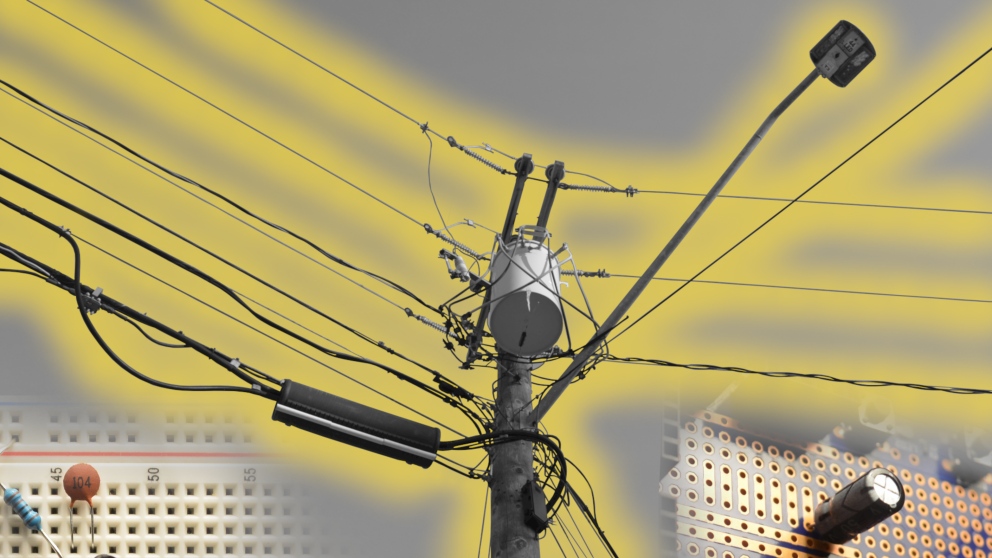Battery Support for Traditional Networks

The transformer on the utility pole is responsible for reducing the voltage of the distribution lines to household levels. Transformers typically work in specific operating conditions, due to the strict control necessary for safe operation of power delivery. This strict control can be disrupted when integrating renewable generation, for example solar panels, due to the natural variability of their output causing a mismatch in power.
A residential battery applied in this scenario can store the excess renewable generation to then redistribute it later. My work uses a digital model of a residential battery to recreate this functionality, the model is then integrated into a virtual power plant. This virtual power plant tool determines the impact of smart grid resources on traditional neighbourhood networks.
Due to the digital nature of my research I decided to represent my work through this abstract collage of related real-world items. The transformer utility pole represents the connection of a neighbourhood network to the greater distribution system. The battery, represented by the two different capacitors to the left and right of the utility pole, is protecting the transformer. This layer of protection, while not typically visual, it is represented here with a faded yellow radiance.